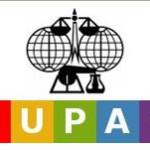- 行业: Chemistry
- Number of terms: 1965
- Number of blossaries: 0
- Company Profile:
The International Union of Pure and Applied Chemistry (IUPAC) serves to advance the worldwide aspects of the chemical sciences and to contribute to the application of chemistry in the service of people and the environment. As a scientific, international, non-governmental and objective body, IUPAC ...
As applied to a chemical species, the term expresses a kinetic property. A species is said to be more reactive or to have a higher reactivity in some given context than some other (reference) species if it has a larger rate constant for a specified elementary reaction. The term has meaning only by reference to some explicitly stated or implicitly assumed set of conditions. It is not to be used for reactions or reaction patterns of compounds in general.
The term is also more loosely used as a phenomenological description not restricted to elementary reactions. When applied in this sense the property under consideration may reflect not only rate, but also equilibrium, constants.
Industry:Chemistry
As applied to a chemical species, the term expresses a kinetic property. A species is said to be more reactive or to have a higher reactivity in some given context than some other (reference) species if it has a larger rate constant for a specified elementary reaction. The term has meaning only by reference to some explicitly stated or implicitly assumed set of conditions. It is not to be used for reactions or reaction patterns of compounds in general.
The term is also more loosely used as a phenomenological description not restricted to elementary reactions. When applied in this sense the property under consideration may reflect not only rate, but also equilibrium, constants.
Industry:Chemistry
Any numerical index derived from quantum mechanical model calculations that permits the prediction of relative reactivities of different molecular sites. Many indices are in use, based on a variety of theories and relating to various types of reaction. The more successful applications have been to the substitution reactions of conjugated systems where relative reactivities are determined largely by changes of pi-electron energy.
Industry:Chemistry
The elementary reaction or reaction stage (of a molecular rearrangement) in which there is both making and breaking of bonds between atoms common to a reactant and a reaction product or a reaction intermediate. If the rearrangement stage consists of a single elementary reaction, this is a "rearrangement step".
Industry:Chemistry
The complete transfer of one or more electrons to a molecular entity (also called "electronation"), and, more generally, the reverse of the processes described under oxidation (2), (3).
Industry:Chemistry
A regioselective reaction is one in which one direction of bond making or breaking occurs preferentially over all other possible directions. Reactions are termed completely (100%) regioselective if the discrimination is complete, or partially (x%), if the product of reaction at one site predominates over the product of reaction at other sites. The discrimination may also semi-quantitatively be referred to as high or low regioselectivity.
(Originally the term was restricted to addition reactions of unsymmetrical reagents to unsymmetrical alkenes.)
In the past, the term "regiospecificity" was proposed for 100% regioselectivity. This terminology is not recommended owing to inconsistency with the terms stereoselectivity and stereospecificity .
Industry:Chemistry
Passage of an excited or otherwise perturbed system towards or into thermal equilibrium with its environment.
Industry:Chemistry
In a one-electron transfer reaction
<center>A + D ⇌ A<sup>. -</sup> + D<sup>.+</sup></center>
the reorganization energy λ is the energy required for all structural adjustments (in the reactants and in the surrounding solvent molecules) which are needed in order that A and D assume the configuration required for the transfer of the electron.
Industry:Chemistry
In the context of chemistry, the term refers to the representation of the electronic structure of a molecular entity in terms of contributing structures. Resonance among contributing structures means that the wavefunction is represented by "mixing" the wavefunctions of the contributing structures. The concept is the basis of the quantum mechanical valence bond methods. The resulting stabilization is linked to the quantum mechanical concept of "resonance energy". The term resonance is also used to refer to the delocalization phenomenon itself.
Industry:Chemistry
